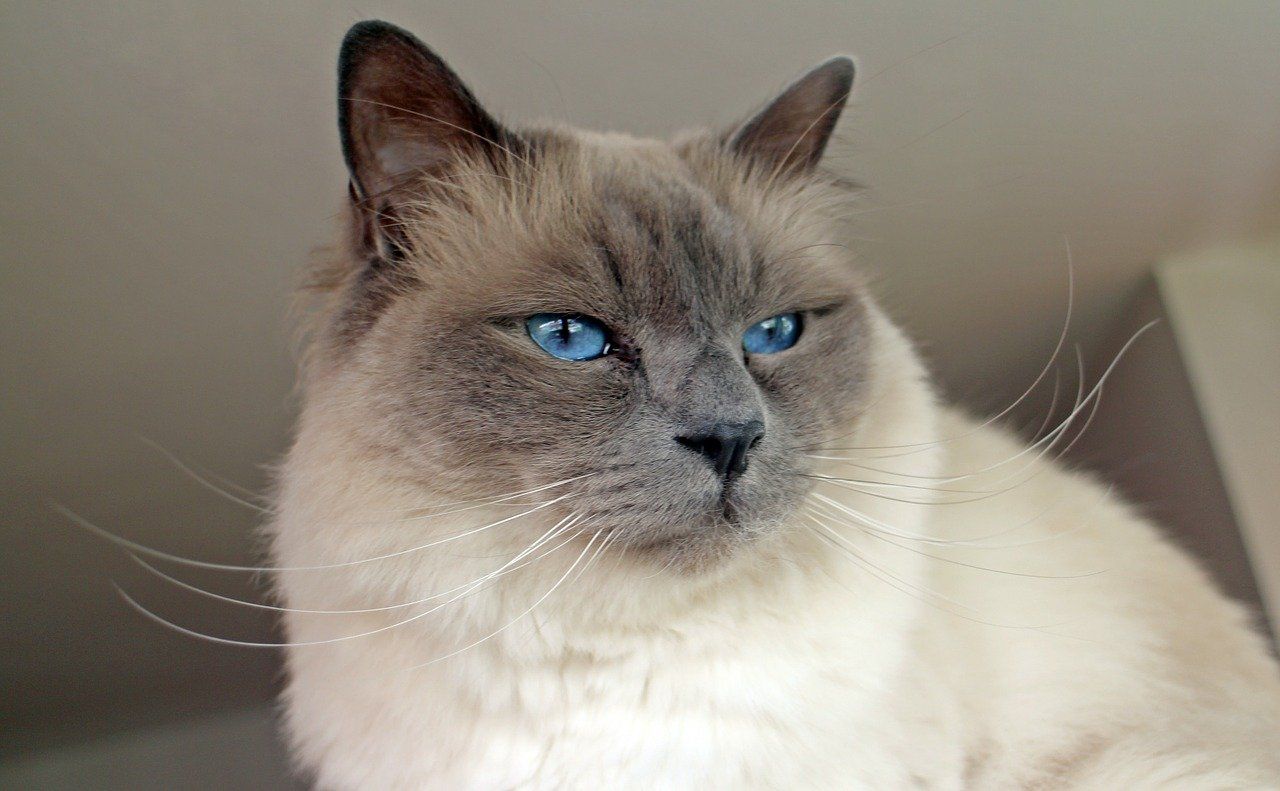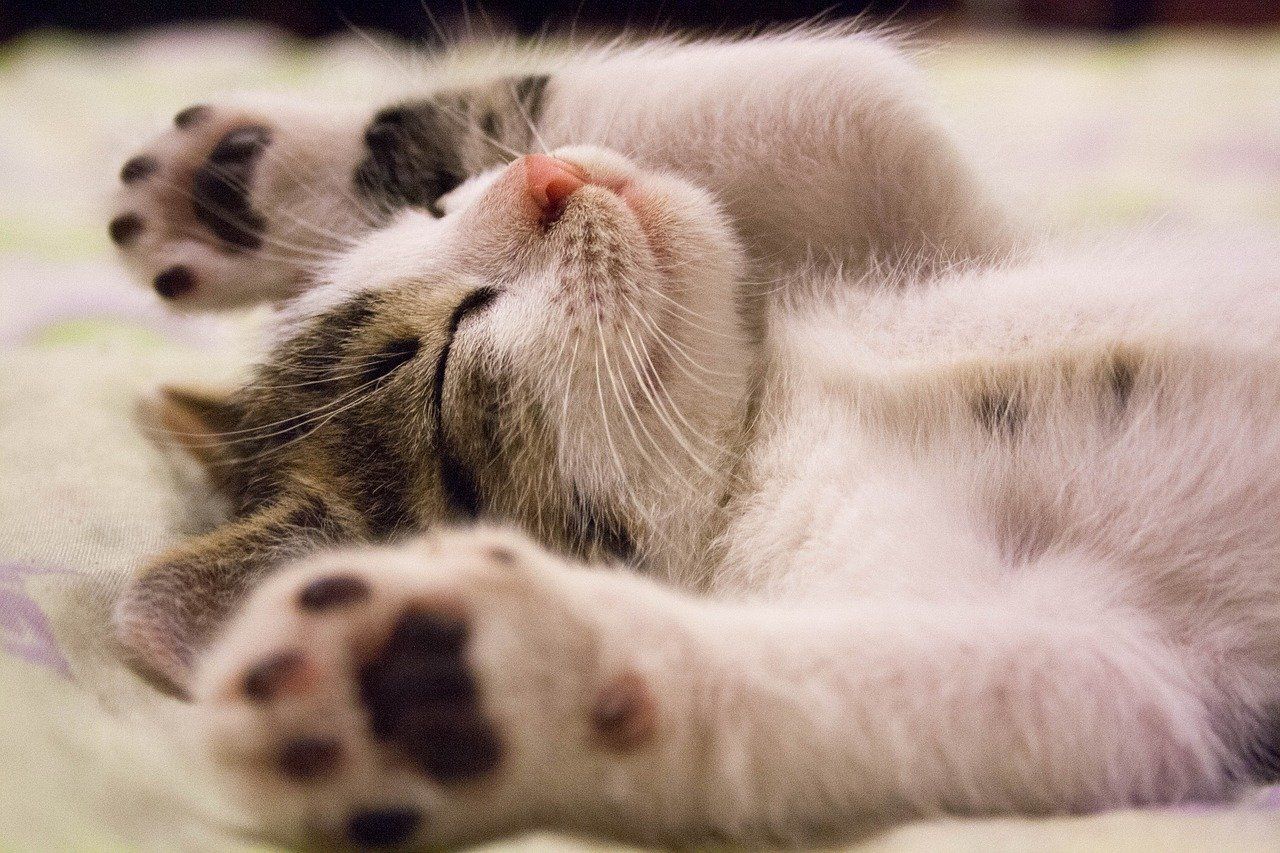Kitten Portal
Your kitten's experiences in the first few months of their life - will determine the rest of their life...
It's all in the preparation...
Choosing the breed...
The majority of cats that we see are the traditional "Domestic Short Hair" or "Domestic Long Hair" varieties. As a species these are a pretty robust breed! We do tend to find that, on the whole, the pedigree breeds tend to have more health issues and so you need to be aware of this if choosing one of these types.
Cats have specific breed characteristics and traits and so it is recommended that research is carried out prior to buying a kitten. This ensures that a specific breed is suitable for your household and lifestyle.
There are some practical differences that can occur, depending on things such as size, coat type, coat length etc.
We are more than happy to discuss any aspect of breed selection...
Where to get your Kitten from?
Preparing to come Home...
Before your kitten comes home, there are some things that you can do around the house to try and make it both a bit more safe and also welcoming:
- Kittens are inquisitive and will explore the whole house if left to their own devices! It may be appropriate to restrict access to certain areas of the home. Try to move things that could fall and hurt them as well as hide away anything precious that they could damage (think mantelpiece!).
- Make sure you remove any toxic plants such as Lilies or Dieffenbachia (Dumb Cane)
- For multicat households, following careful introduction, plenty of easily available resources should be provided in different locations around the home. This should include a selection of feeding and drinking stations, as well as resting areas and toys.
- Litter trays should be provided with a minimum of one more than the number of cats in order to reduce competition for valued resources (these must also be cleaned often).
- Cats usually spend as many as six hours per day hunting for food. Trying to meet particular needs of your cat includes feeding small amounts in different locations (away from drinking stations), as well as using puzzle feeders and dispensing toys to encourage activity and natural behaviours.
- The use of filtered or previously boiled water may encourage drinking of household water, which cats may find less attractive due to the smell of the chemicals contained within it. Rain water may also be collected and used as an alternative if preferred.
- If you are looking to invest in a cat-flap, then we strongly suggest that you have a microchip operated flap installed as these are BRILLIANT for preventing other cats coming into the house.
- Make sure that you have plenty of "safe-havens" set up so the kitten can hide if necessary. You can make use of boxes, child-gates, igloo type beds etc.
- Think about having a Feliway Classic Diffuser set up and installed in your house BEFORE the kitten comes home.
Introducing your kitten to other cats.
If you are thinking of getting another cat, it is important to first consider whether your existing cat is a suitable candidate for sharing a household. It is also important to consider the introductory process , and that you have the facility to accommodate the necessary facilities.
- The new cat should at first be housed in a room which your existing cat rarely uses. The room should contain all necessary resources for your new kitten. This should include scratching posts, toys and safe, elevated accessible areas for sleeping and rest.
- Once both cats are relaxed in their designated areas within the home, the scent swapping process may commence. This is an important part of the introductory process, facilitating the formation of a shared scent by which the cats then consider themselves to be part of the same social group.
- Small pieces of bedding may first be exchanged and placed in one another’s area. Care should be taken that they are away from items that the cat values, in order to minimise stress.
- Further swapping of items may take place following a relaxed reception to the introduction of the scented items. Scent swapping may be continued by moving between the cats in their individual areas and stroking one and then another without washing your hands in between.
- After several days of success, you may arrange for each cat to explore one another’s area without the presence of the other animal. Individuals should be free to move away from the area if desired, and should be monitored for signs of stress at all times.
- When both parties are entirely at ease with the scent of one another, visual introduction may begin to take place. This should always happen at first with the presence of a physical barrier, such as a door secured ajar, or a stair gate with a towel to cover the majority of it.
- Both animals should always have full availability to move away from one another, as well as to have the opportunity to hide or to move to an elevated position. Meetings should be short and supervised, paired with positive rewards such as treats and chasing games with toys.
- Punishment should never occur for a negative response to a meeting by one of the cats. This is likely to create further feelings of stress. In the event of a negative response, go back to the previous stage.
- Progression to removal of the barrier should only be made when both cats show relaxed and calm behaviours when in visual contact with one another.
- Supervised sessions without a physical barrier should at first only occur for a minute or two. Progression to longer sessions may take place if both cats demonstrate relaxed and friendly behaviours in the presence of one another.
- As time length progresses it is essential that adequate resources are available for both cats in their separate areas and distributed around the house in order to minimise risk conflict.
Indoor or Outdoor?
Indoor Cats
- Much less likely likely to get in cat fights.
- Less likely to be injured by a car.
- Less likely to pick up parasites such as fleas/worms.
- Won't catch be able to catch birds or wildlife.
Cons
- Don't tend to get as much exercise so find it easier to put on weight.
- Tend to be more prone to urinary problems as they can't exhibit some of their preferred drinking behaviour.
- Inability to perform natural behaviours such as hunting. Inability to perform natural behaviour is a welfare concern and is detrimental to the wellbeing of an animal. Alternative provisions should be made in the form of activity toys etc.
Outdoor Cats
Pros
- Are able to exercise freely and so weight gain is less of a problem.
- Able to express it normal evolutionary behaviour - such as hunting.
- Will often toilet outside and so can reduce the need for litter trays in the house.
- Are able to have free access to outdoor sources of drinking water.
Cons
- Are more likely to catch disease or be injured by other cats.
- Are more likely to be injured by cars. Sadly approximately 1 in 4 cats will be killed by a car, although most of these are in the first year of their life.
- Impact on the local wildlife and bird populations.
Important Paperwork.
- Proof of any blood results from the breeder showing infectious disease status. (If available.)
- Proof of any vaccinations or parasite treatment that may have already been given.
- Details of the brand, type and flavour of food that the kitten is already used to eating.
- Look into getting your pet insured before you have collected them.
- Get your pet registered and booked in for a veterinary health check as soon as possible.









